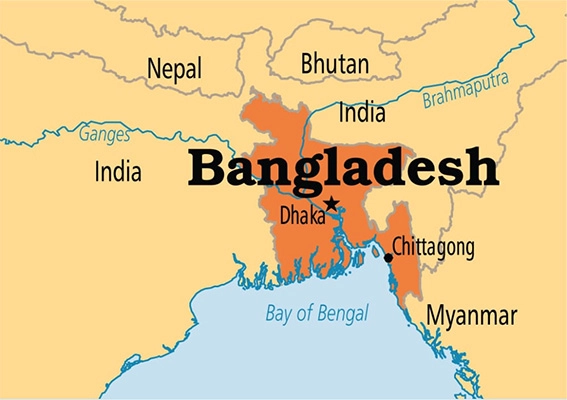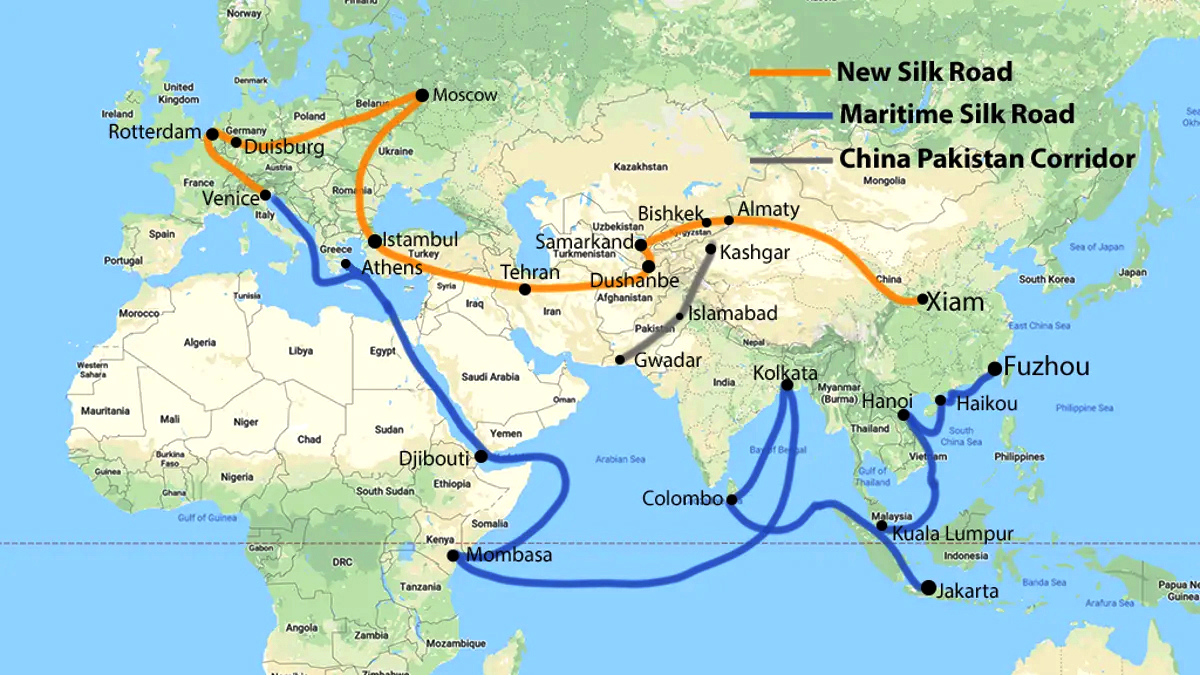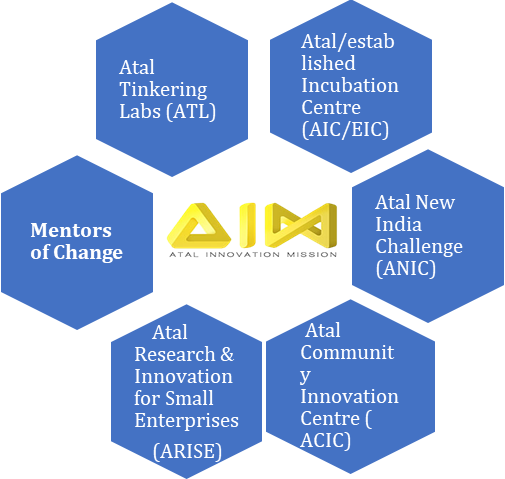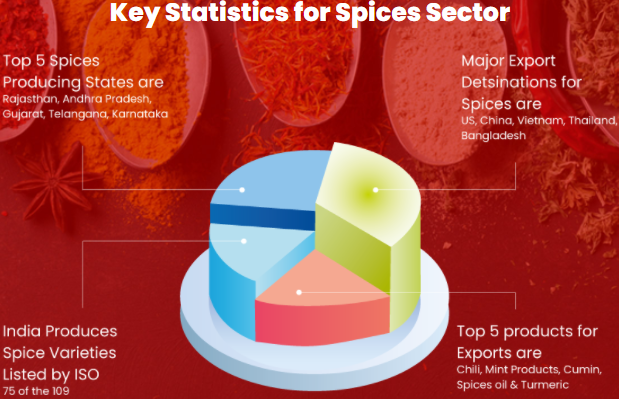Decline in China’s BRI Investments
For Prelims: Belt and Road Initiative (BRI), Build Back Better World, Blue Dot Network, Global Gateway
For Mains: BRI and its reach, implications and consequences, Initiatives launched to tackle BRI.
Why in News
According to a China based think tank report, investments in China's much-touted Belt and Road Initiative (BRI) have fallen by 5% since 2019.
- Unsuccessful deals and the Covid-19 pandemic contributed to the fall in the investments.
- Also, China is no longer doling out hard cash for projects in Africa, amid criticism over infrastructure debt and loan defaults.
Key Points
- About BRI:
- It is a multi-billion-dollar initiative launched in 2013.
- It aims to link Southeast Asia, Central Asia, the Gulf region, Africa and Europe with a network of land and sea routes.
- It has been launched to undertake big infrastructure projects in the world which in turn would also enhance the global influence of China.
- More than 100 countries signed agreements with China to cooperate in BRI projects like railways, ports, highways and other infrastructure.
- From 2000 to 2020, China helped African countries build more than 13,000 kms of roads and railways, and more than 80 large-scale power facilities, and funded over 130 medical facilities, 45 sports venues and over 170 schools and built the African Union Conference Centre.
- Activities under BRI:
- It encompassed five kinds of activities:
- Policy coordination, Trade promotion, Physical connectivity, Renminbi internationalization (China’s currency) and People to people contacts.
- It encompassed five kinds of activities:
- Routes of BRI:
- New Silk Road Economic Belt: It encompasses trade and investment hubs to the north of China, by reaching out to Eurasia including a link via Myanmar to India.
- Maritime Silk Road (MSR): It begins via the South China Sea going towards Indo-China, South-East Asia and then around the Indian Ocean thus reaching Africa and Europe.
- Related concerns (for India and World):
- Hamper India’s Strategic Interests:
- The China-Pakistan Economic Corridor (CPEC) passes through Pakistan-occupied Kashmir (PoK) and Baluchistan, both of which are home to a long-running insurgency.
- CPEC would hamper India’s strategic interests in the South Asian region and can aid Pakistan’s legitimacy in the Kashmir dispute too.
- Also, attempts to extend CPEC to Afghanistan may undermine India’s position as economic, security and strategic partner of Afghanistan.
- China’s Strategic Rise in the Subcontinent: Along with China-Myanmar Economic Corridor (CMEC) and CPEC, China is also developing the China-Nepal Economic Corridor (CNEC) which will link Tibet to Nepal.
- The endpoints of the project will touch the boundaries of the Gangetic plain.
- Thus three corridors signify the economic as well as strategic rise of China in the Indian subcontinent.
- Lack of Transparency:
- Lack of transparency of the BRI agreements and mounting debt to China by smaller countries have raised global concerns.
- The 99-year lease of Hambantota port to China by Sri Lanka has raised red flags about the downside of the BRI and push for major infrastructure projects costing billions of dollars in small countries.
- Lack of transparency of the BRI agreements and mounting debt to China by smaller countries have raised global concerns.
- Hamper India’s Strategic Interests:
- Initiatives to Tackle BRI:
- B3W Initiative: The G7 Countries proposed a ‘Build Back Better World (B3W) initiative’ at the 47th G7 summit to counter China’s BRI.
- It aims to address the infrastructure investment deficit in developing and lower income countries - the space which has been increasingly captured by China.
- Blue Dot Network (BDN): It is a multi-stakeholder initiative formed by the US, Japan and Australia to bring together governments, the private sector and civil society to promote high-quality, trusted standards for global infrastructure development.
- BDN was formally announced in november, 2019 at the Indo-Pacific Business Forum in Bangkok, Thailand.
- Global Gateway: In a bid to compete with BRI, the European Union recently launched the Global Gateway, a new infrastructure development scheme.
- B3W Initiative: The G7 Countries proposed a ‘Build Back Better World (B3W) initiative’ at the 47th G7 summit to counter China’s BRI.
Way Forward
- To counter China's BRI, alternative projects must be launched by more advanced countries which are also participatory in nature keeping into account the interests of the host/recipient countries.
- India must seek help from partners like Japan when necessary to build and upgrade its infrastructure and create an alternative to Chinese-led connectivity corridors and infrastructure projects since India’s ability to act alone in South Asia and the larger Indian Ocean is limited.
- For India, it is important to work with its partners in the region to offer alternative connectivity arrangements to its neighbours.
- Connectivity is increasingly seen as a tool for exerting foreign policy influence.
Ramna Kali Temple: Bangladesh
For Prelims: Ramna Kali Temple, Bangladesh Liberation War.
For Mains: 50th anniversary of the victory of Bangladesh and India in the Liberation War, India-Bangladesh Ties.
Why in News
Recently, the Indian President has inaugurated the reconstructed Ramna Kali temple in Ramna, Dhaka (Bangladesh), where the landmark Suhrawardy Udyan (the former Ramna Race Course) is located.
- The inauguration of the reconstructed Ramna Kalibari coincided with the 50th anniversary of the victory of Bangladesh and India in the Liberation War, which also marks the golden jubilee of the bilateral relations between the two sides.
Key Points
- About:
- The temple was destroyed by Pakistani forces during their Operation Searchlight in March 1971, the brutal crackdown that led to the genocide and the Bangladesh War of Liberation.
- In March 1971, West Pakistan led a genocide in East Pakistan to suppress calls for Bengali self-determination. East Pakistan fought and won to establish the People's Republic of Bangladesh. India played a crucial role in Bangladesh's freedom struggle.
- After Bangladesh got rid of Pakistan, a small temple was set up at the site for people to offer prayers.
- A reconstruction of the complex was announced in 2017, when then Indian External Affairs Minister inaugurated 15 development projects in Baridhara, Dhaka.
- The historic Ramna Kali temple is a symbol of the spiritual and cultural bonding among the people of India and Bangladesh.
- The temple was destroyed by Pakistani forces during their Operation Searchlight in March 1971, the brutal crackdown that led to the genocide and the Bangladesh War of Liberation.
- Ramna Kali Temple:
- The temple in the area, dedicated to the Goddess Kali, is believed to have been built during the Mughal period. It is believed to be 400 years old, even though it is difficult to pinpoint a year in which it was built.
- The temple was built by a Hindu sect, but it is difficult to identify exactly who built it. However, it is said that it was built by a certain Haricharan Giri who was a mahant in the temple.
- It was not a very large temple, and was fairly ordinary in terms of its architecture. However, it is the second oldest Hindu temple in Bangladesh, the Dhakeshwari Temple being the oldest.
- The temple gained prominence in the early 20th century when the renowned saint Ma Anandamayi built her ashram in its precincts.
- Anandamayi was popularly addressed as “Shahbag-er ma”, or the Mother of Shahbag.
- The Temple and the War:
- On 27th March 1971, the Pakistani army destroyed the temple and massacred 85 Hindus, including priests and devotees.
- On 7th March 1971, Days before the temple was razed, Bangabandhu Sheikh Mujibur Rahman delivered his historic speech at the Ramna Race Course maidan, in which he exhorted Bengalis for the struggle for independence.
- Bangabandhu Sheikh Mujibur Rahman (1920-1975) is the founding leader of Bangladesh and the country’s first Prime Minister.
India-Bangladesh Relations
- Military Cooperation:

- The Bangladesh government has uprooted anti-India insurgency elements from its borders, making the India-Bangladesh border one of the region’s most peaceful.
- This has allowed India to make a massive redeployment of military resources to its more contentious borders elsewhere.
- Land Boundary Agreement:
- Bangladesh and India have achieved the rare feat of solving their border issues peacefully by ratifying the historic Land Boundary Agreement in 2015.
- Trade Relations:
- Bangladesh today is India’s biggest trading partner in South Asia with exports to Bangladesh in FY 2018-19 at USD 9.21 billion and imports at USD1.04 billion.
- Also, India has offered duty free access to multiple Bangladeshi products.
- Development Sector:
- India extended three lines of credit to Bangladesh in recent years amounting to USD 8 billion for the construction of roads, railways, bridges, and ports.
- Improved Connectivity: .
- A direct bus service between Kolkata and Agartala runs a route distance of 500 km, as compared to the 1,650 km if it ran through the Chicken’s Neck to remain within India.
- Bangladesh allows the shipment of goods from its Mongla and Chattogram (Chittagong) seaports carried by road, rail, and water ways to Agartala.
- New Areas of Engagement:
- Bangladeshis make up a large portion of tourists in India, outnumbering all tourists arriving from western Europe in 2017, with one in every five tourists being a Bangladeshi.
- Bangladesh accounts for more than 35% of India’s international medical patients and contributes more than 50% of India’s revenue from medical tourism.
- Recent Development:
- Earlier, a 122-member contingent of the Bangladesh Armed Forces had participated in the 72nd Republic Day parade, commemorating 50 years of the 1971 India-Pakistan war that led to the liberation of Bangladesh.
Vernacular Innovation Program: NITI Ayog
For Prelims: Vernacular Innovation Program, Atal Innovation Mission, Eighth Schedule
For Mains: VIP and its importance in overcoming the barriers of language and empowering innovators. Government Efforts in Creating an Innovation Ecosystem in India.
Why in News
Recently, Atal Innovation Mission (AIM), NITI Aayog has launched Vernacular Innovation Program (VIP), to enable innovators and entrepreneurs to have access to the innovation ecosystem in 22 scheduled languages.
Key Points
- About:
- VIP is an initiative to lower the language barrier in the field of innovation and entrepreneurship such that it will systematically decouple creative expressions and languages of transaction.
- To build the necessary capacity for the VIP, AIM has identified and will be training a Vernacular Task Force (VTF) in each of the 22 scheduled languages.
- Each task force comprises vernacular language teachers, subject experts, technical writers, and the leadership of regional Atal Incubation Centers (AICs).
- Significance:
- It will be a stepping stone in the journey of the Indian innovation and entrepreneurship ecosystem which will cement the cognitive and design thinking attitude in young and aspiring minds.
- It will assist India in building a strong local network of design experts and innovation practitioners.
- It will help in overcoming the barriers of language and empower innovators in the farthest areas of the country.
- It will create equal opportunity for the vernacular innovators who represent the staggering 90% of Indian population.
- As per 2011 census, only 10.4% of Indians speak English, most as their second, third, or fourth language.
- Only 0.02% of Indians spoke English as their first language.
- By providing access to learning in one’s language and culture, AIM looks forward to enriching the local, regional, national and global innovation pipelines.
- Other Initiatives Related to Innovation/Entrepreneurship:
Atal Innovation Mission
- About:
- AIM is Government of India’s flagship initiative to promote a culture of innovation and entrepreneurship in the country. It has been set up by the NITI Aayog.
- Objective:
- To develop new programmes and policies for fostering innovation in different sectors of the economy, provide platform and collaboration opportunities for different stakeholders, create awareness and create an umbrella structure to oversee the innovation ecosystem of the country.
- Initiatives Undertaken:
- Major Achievement:
- AIM’s initiatives have played an important contributory role in the advancement of India from a position of 81 in the Global Innovation Index in 2015 to a position of 48 in 2020.
Eighth Schedule
- It lists the official languages of the republic of India. Part XVII of the Indian constitution deals with the official languages in Articles 343 to 351.
- However, it can be noted that there is no fixed criteria for any language to be considered for inclusion in the Eighth Schedule.
- The Eighth Schedule to the Constitution consists of the following 22 official languages:
- Assamese, Bengali, Gujarati, Hindi, Kannada, Kashmiri, Konkani, Malayalam, Manipuri, Marathi, Nepali, Oriya, Punjabi,Sanskrit, Sindhi, Tamil, Telugu, Urdu, Bodo, Santhali, Maithili and Dogri.
- Of these languages, 14 were initially included in the Constitution.
- Sindhi language was added by the 21st Amendment Act of 1967.
- Konkani, Manipuri, and Nepali were included by the 71st Amendment Act of 1992.
- Bodo, Dogri, Maithili, and Santhali were added by the 92nd Amendment Act of 2003 which came into force in 2004.
Mob Lynching
For Prelims: States which have passed laws against mob lynching, Poonawala case, Provisions available against mob lynching.
For Mains: Causes for Mob Lynching and measures taken to address it.
Why in News
The former Punjab Chief Minister expressed concern over the recent incidents of lynching reported in Amritsar and Kapurthala.
Key Points
- About:
- Mob lynching is a term used to describe the acts of targeted violence by a large group of people.
- The violence is tantamount to offences against human body or property- both public as well as private.
- The mob believes that they are punishing the victim for doing something wrong (not necessarily illegal) and they take the law in their own hands to punish the purported accused without following any rules of law.
- Causes for Mob Lynching:
- Intolerance:
- People are intolerant in accepting the acts of law and go on to punish the alleged person assuming the act to be immoral.
- Biases:
- Biases based on various identities like caste, class, religion, etc: mob lynching is a hate crime that is rising due to the biases or prejudices among various castes, classes of people, and religions.
- Rise of Cow Vigilante:
- It is one of the crucial reasons that agitate the growing rise in mob lynching activities.
- Lack of Speedy Justice:
- Inefficient working of justice rendering authorities is the primary reason why people take law into their own hands and have no fear of the consequences.
- The Inefficiency of Police Administration:
- Police officers play an important role in protecting the life of the people and maintaining harmony among the people but due to their ineffective investigation procedure, this hate crime is rising day by day.
- Intolerance:
- Types of Mob-lynching: Mob-Lynching based on the causes can be classified into five types. They are:
- Communal based
- Witchcraft
- Honour killing
- Bovine-related mob lynching
- Suspicion of Child lifting
- Theft cases
- Related Issues:
- Mob lynching is a violation of human dignity, Article 21 of the Constitution, and a gross infringement of the Universal Declaration of Human Rights.
- Such incidents violate the Right to Equality and Prohibition of discrimination, which are enshrined in Articles 14 and 15 of the Constitution of India.
- However, it is nowhere mentioned in the law of the land and is hence simply put as murder since it has not been yet incorporated under the Indian Penal Code.
- Related Steps Taken:
- Preventive Measures:
- In July 2017, the Supreme Court in the case of Tahseen s. Poonawala v. UOI had laid down several preventive, remedial and punitive measures to deal with lynching and mob violence.
- The Supreme Court in this case aptly referred to mob lynching as a ‘horrendous act of mobocracy.’
- In July 2017, the Supreme Court in the case of Tahseen s. Poonawala v. UOI had laid down several preventive, remedial and punitive measures to deal with lynching and mob violence.
- Designated Fast Track Courts:
- States were directed to set up designated fast track courts in every district to exclusively deal with cases involving mob lynchings.
- Special Task Force:
- The court had also mooted the setting up of a special task force with the objective of procuring intelligence reports about the people involved in spreading hate speeches, provocative statements and fake news which could lead to mob lynchings.
- Victim Compensation Schemes:
- Directions were also issued to set up Victim compensation schemes for relief and rehabilitation of victims.
- A year later in July 2019 the Supreme Court issued notices to the Centre and several states asking them to submit the steps taken by them towards implementing the measures and file compliance reports.
- As of now only three states Manipur, West Bengal and Rajasthan have enacted laws against mob lynching.
- The Jharkhand Assembly has passed Prevention of Mob Violence and Mob Lynching Bill, 2021 recently.
- Preventive Measures:
Way Forward
- Lynchings are an abomination that must have no place in a democratic society, which India prides itself to be.
- Lynchings are a uniquely unsettling derailment of governance — while an act of mob violence is itself a sign of failure of law enforcement, it is committed in an apparent consideration that there can be no legal recourse.
- In a pathological subversion of principles, the police inaction in cases of mob violence is reciprocated by an apparent public sanction of extrajudicial punishments by the police.
- All this bodes ill for the country. Mob violence indeed defames the country and there must be stringent intervention by the police to bring an end to this.
- The political leadership also has a role to play in questioning the social consent that allows mob violence.
Spices Sector in India
For Prelims: Major Spice Producing States, Key Statistics for Spices Sector
For Mains: Spices Production in India, Initiative Taken for the Spices Sector
Why in News
Recently, the Minister for Agriculture and Farmers Welfare has released the book ‘Spices Statistics at a Glance 2021.
- The book highlights the growth achieved in the production of spices and increase in area during the last seven years from 2014-15 to 2020-21 in the country.
Key Points
- About Spices:
- Spices are aromatic flavorings from seeds, fruits, bark, rhizomes, and other plant parts.
- They are used to season and preserve food, and as medicines, dyes, and perfumes.
- Spices have been highly valued as trade goods for thousands of years.
- The word spice comes from the Latin species, which means merchandise, or wares.
- The demand of spices has tremendously increased due to the recognition of spices as a health supplement especially during the pandemic period.
- This can be clearly seen from the growing export of spices like turmeric, ginger, cumin, chilli etc.
- Spices Production In India:
- India is the world's largest producer, consumer and exporter of spices.
- Due to the varying climates - from tropical to subtropical to temperate-almost all spices grow splendidly in India.
- In reality almost all the states and union territories of India grow one or the other spices.
- Under the act of Parliament, a total of 52 spices are brought under the purview of the Spices Board.
- Spices Board (Ministry of Commerce and Industry) is the flagship organization for the development and worldwide promotion of Indian spices.
- It was established by the Spices Board Act, 1986.
- In India, there are some states which grow the spices that have very high value in both national and international markets.
- The best example is Kashmiri saffron which is the world’s best saffron.
- The Kashmir saffron has got Geographical Indication (GI) tag status.
- Spices Trade:
- The export of spices contributes 41% of the total export earnings from all horticulture crops in the country.
- It ranks fourth among agricultural commodities, falling behind only the marine products, non basmati rice and basmati rice.
- Related Government Initiative:
- Recently, the Food Safety and Standards Authority of India (FSSAI) inaugurated the fifth session of the Codex Committee on Spices and Culinary Herbs (CCSCH) established under Codex Alimentarius Commission (CAC).
- About the Codex Committee on Spices and Culinary Herbs (CCSCH):
- Establishment: It was formed in 2013.
- Terms of Reference:
- To elaborate worldwide standards for spices and culinary herbs in their dried and dehydrated state in whole, ground, and cracked or crushed form.
- To consult, as necessary, with other international organizations in the standards development process to avoid duplication.
Tamil Literature: Sangam Period
For Prelims: Sangam Period, Krishna and Tungabhadra rivers, Tolkāppiyam, Ettuttokai, Pattuppattu, Nattrinai, Kuruntokai, Aignkurunuru, Pathittrupattu, Paripādal, Kalittokai, Akananuruand Purananuru, Silappathikaram, Elango Adigal, Manimegalai, Sittalai Sattanar
For Mains: Various facets of Sangam literature and their relevance as historical texts, History of Tamil Literature.
Why in News
Recently, the Minister of State for Education, released the Hindi translation of Tolkāppiyam and the Kannada translations of 9 books of Classical Tamil literature.
- Tamil literature goes back to the Sangam Era, named after the assembly (sangam) of poets.
Key Points
- About:
- Sangam Period:
- The period roughly between the 3rd century B.C. and 3rd century A.D. in South India (the area lying to the south of river Krishna and Tungabhadra) is known as Sangam Period.
- It has been named after the Sangam academies held during that period that flourished under the royal patronage of the Pandya kings of Madurai.
- At the sangams, eminent scholars assembled and functioned as the board of censors and the choicest literature was rendered in the nature of anthologies.
- These literary works were the earliest specimens of Dravidian literature.
- South India, during the Sangam Age, was ruled by three dynasties-the Cheras, Cholas and Pandyas.
- Three Sangams:
- According to the Tamil legends, there were three Sangams (Academy of Tamil poets) held in the ancient South India popularly called Muchchangam.
- The First Sangam, is believed to be held at Madurai, attended by gods and legendary sages. No literary work of this Sangam is available.
- The Second Sangam was held at Kapadapuram, only Tolkappiyam survives from this.
- The Third Sangam was also held at Madurai. A few of these Tamil literary works have survived and are a useful source to reconstruct the history of the Sangam period.
- According to the Tamil legends, there were three Sangams (Academy of Tamil poets) held in the ancient South India popularly called Muchchangam.
- Sangam Period:
- Sangam Literature:
- The Sangam literature includes Tolkappiyam, Ettutogai, Pattuppattu, Pathinenkilkanakku, and two epics named – Silappathikaram and Manimegalai .
- Tolkappiyam: It was authored by Tolkappiyar and is considered the earliest of Tamil literary work.
- Though it is a work on Tamil grammar, it also provides insights on the political and socio-economic conditions of the time.
- It is a unique work on grammar and poetics, in its three parts of nine sections each, deals with Ezhuttu(letter), Col (word) and Porul (subject matter).
- Almost all levels of the human language from the spoken to the most poetic lie within the purview of Tolkappiyar’s analysis as he treats in exquisitely poetic and epigrammatic statements on phonology, morphology, syntax, rhetoric, prosody and poetics.
- Ettutogai (Eight Anthologies): It consists of eight works – Aingurunooru, Narrinai, Aganaooru, Purananooru, Kuruntogai, Kalittogai, Paripadal and Padirruppatu.
- Pattuppattu (Ten Idylls): It consists of ten works – Thirumurugarruppadai, Porunararruppadai, Sirupanarruppadai, Perumpanarruppadai, Mullaippattu, Nedunalvadai, Maduraikkanji, Kurinjippatttu,Pattinappalai and Malaipadukadam.
- Pathinenkilkanakku: It contains eighteen works about ethics and morals.
- The most important among these works is Tirukkural authored by Thiruvalluvar, the tamil great poet and philosopher.
- Tamil Epics: The two epics Silappathikaram is written by Elango Adigal and Manimegalai by Sittalai Sattanar.
- They also provide valuable details about the Sangam society and polity.
- Tolkappiyam: It was authored by Tolkappiyar and is considered the earliest of Tamil literary work.
- The Sangam literature includes Tolkappiyam, Ettutogai, Pattuppattu, Pathinenkilkanakku, and two epics named – Silappathikaram and Manimegalai .
Pralay Missile
Why in News
Recently, the Defence Research and Development Organisation (DRDO) has successfully conducted maiden flight test of a new indigenously developed surface-to-surface missile ‘Pralay’.
- The missile was tested from the Dr A.P.J. Abdul Kalam Island off the coast of Odisha.
Key Points
- About: Pralay' is India's first conventional quasi-ballistic missile and is an answer to any conventional missile attack from northern or western borders.
- A quasi-ballistic missile has a low trajectory, and while it is largely ballistic, it can maneuver in flight.
- The missile has been developed in a way that it is able to defeat the interceptor missiles and also has the ability to change its path after covering a certain range mid-air.
- It is powered with a solid propellant rocket motor and many new technologies.
- The missile guidance system includes state-of-the-art navigation system and integrated avionics.
- Background: It is a derivative of the Prahaar missile programme, which was first tested in 2011.
- Prahaar is a surface-to-surface missile with a range of 150 km.
- Primary objective is to bridge the gap between the unguided Pinaka multi-barrel rocket launcher and the guided Prithvi missile variants.
- Range: The missile has a range of 150-500 kilometre and can be launched from a mobile launcher.
- Pralay will be the longest-range surface-to-surface missile in the inventory of the Army.
- The Army also has the BrahMos supersonic cruise missile in its arsenal, with a stated range of 290-plus kilometres.
- Pralay will be the longest-range surface-to-surface missile in the inventory of the Army.
- Significance: It will completely change the tactical battlefield dynamics and India will have two conventional missiles with long range.
- The BrahMos will be a cruise option and this one will be the ballistic option.
| Ballistic Missile vs Cruise Missile | |
| Ballistic Missile | Cruise Missile |
|
|
|
|
|
|
|
|




